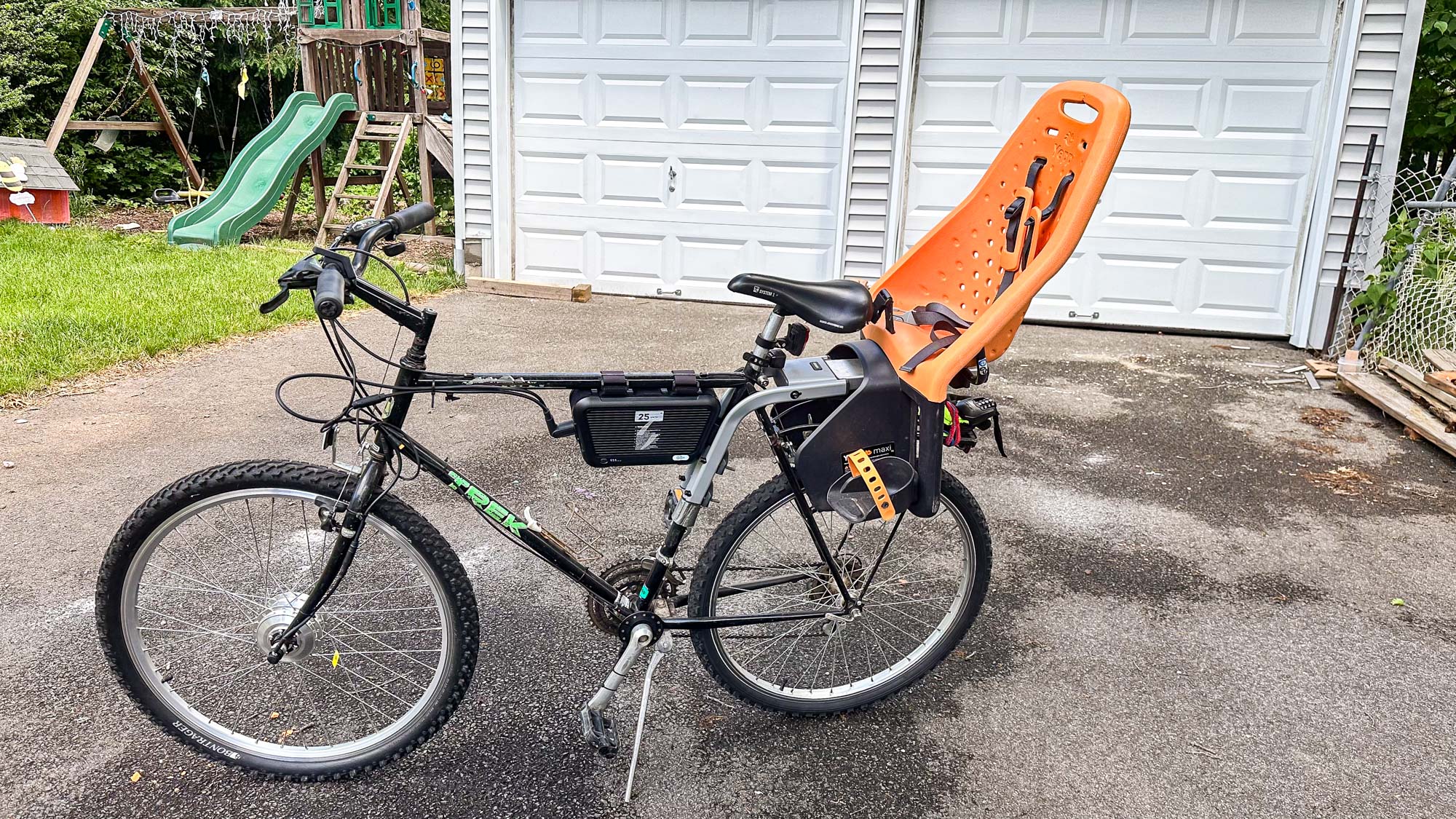
In 2023, I reviewed the Swytch Air e-bike conversion kit, which let me convert my 30-year-old Trek into an electric bike. At the time, I generally liked the kit, but had issues with two things in particular: the ordering process and the limited range of my converted e-bike.
Swytch is back with the Swytch Go, which takes care of at least one of those issues. I tried out the new Swytch Go system for a few weeks to see how it compared to the original, and I have to say, I’m largely impressed. It's definitely a great — and less expensive — alternative to buying one of the best electric bikes, and may just entice you to drag that bike that's been gathering dust in your garage and take it out for a spin.
Swytch Go review: Price and availability
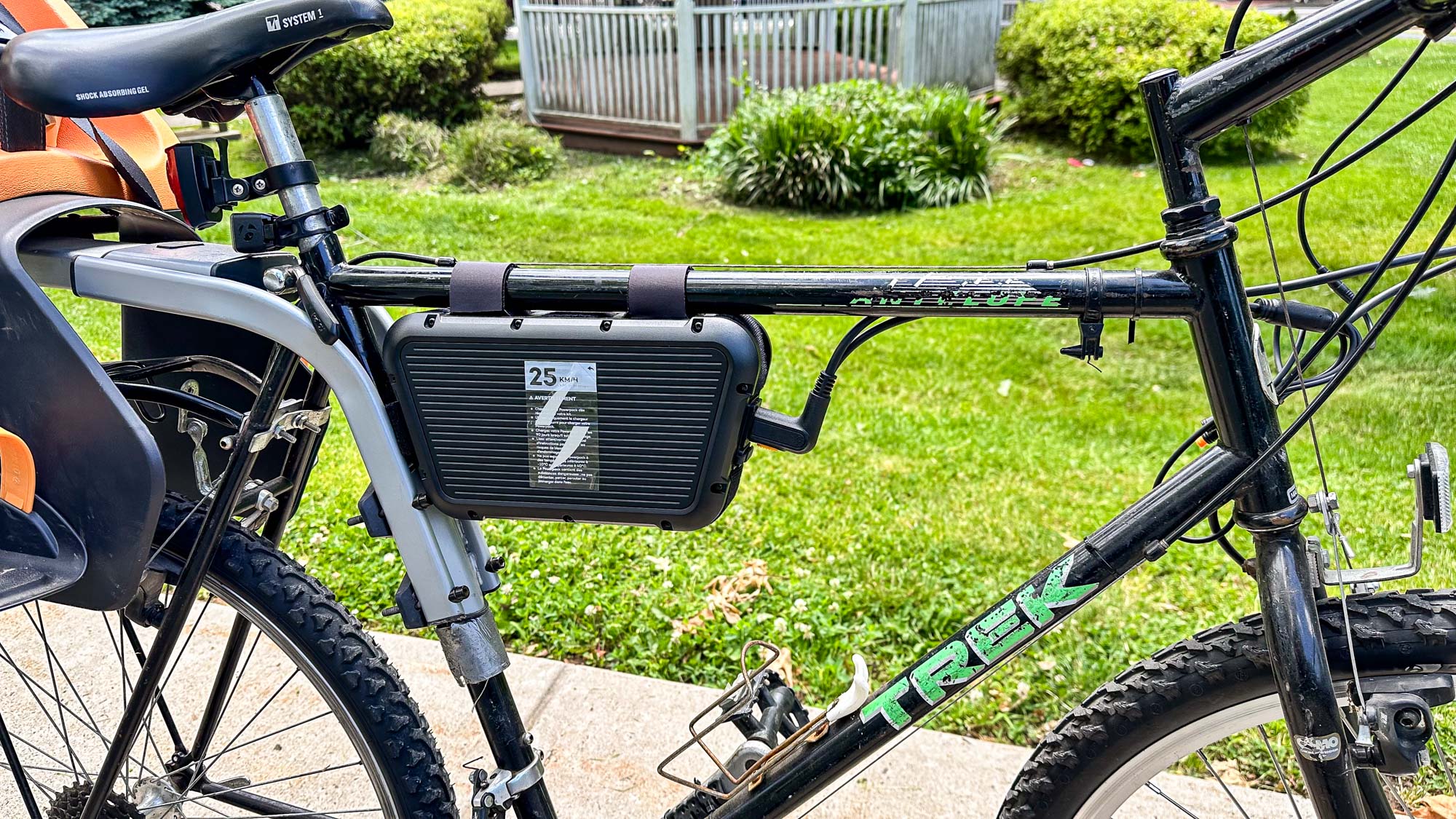
The Swytch Go is available only through Swytch’s website. It’s being offered alongside the original Swytch Air, but where the Air will work with both traditional and folding bikes, the Go only works with the former, due to the size of its battery pack.
As of this writing, you can purchase the Swytch Air Max for $449, or sign up for a waitlist for the Swytch Go. The base model Go kit costs $349 if you pre-order; if you want the optional display, that will be $30 extra — it’s a relatively inexpensive upgrade I recommend.
Next, you have to choose which battery capacity you want: The Go (187Wh, 15-20 mile range) is $349; the Go+ (281Wh, 30-40 mile range) is $399; and the Go++ (378Wh, 45-60 miles) is $475. Swytch sent me the Go+, which feels like the best option for most people — unless you’re planning to ride for long distances, it should be more than enough juice.
You next have to specify how soon you’ll want your kit. If you want to ride by July, your total price will be $699; if you can wait until the end of July, it’s $499, and if you can wait until September, it’s just $349.
After you put down your deposit, you’ll need to provide some information, such as the wheel size of your bike (from 16 to 28 inches), whether you have disc or rim brakes, and what kind of display you want.
After submitting your credit card information, you’ll then receive a confirmation email, which will invite you to purchase other add-ons, such as a throttle. (You can also purchase accessories after the fact at this page.)
Frustratingly, there’s no link from the main Swytch website to the ordering page, only a field to sign up for the waitlist. If you want to order the kit, go to this Swytch order page instead. I still don’t get why Swytch makes things so difficult.
Swytch Go review: Installation
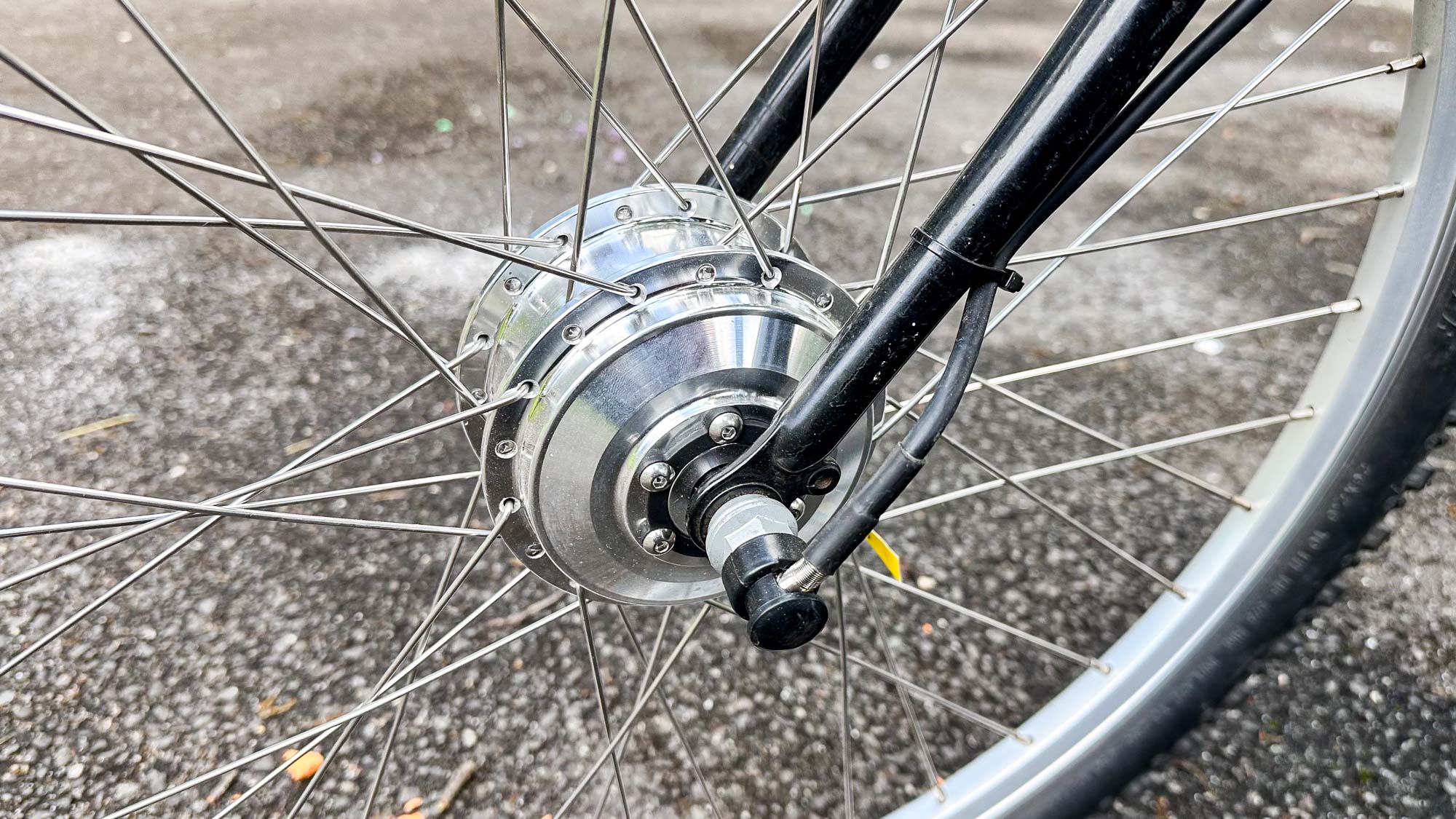
The installation process for the Swytch Go is very similar to the Swytch Air. First, you swap out the front wheel of your bike for the one that’s included in the Swytch kit — you’ll have to install the tube and tire, too. Next, you attach a sensor and a ring around the crankshaft of one of the pedals, then mount the battery and display, and then zip-tie all of the loose cables.
Apart from its much larger capacity, the Swytch Go’s battery is a lot easier to install than the Air. The former requires you to mount it between your handlebars using some clamps and an Allen wrench; the Go’s battery merely straps on to your bike using three Velcro straps.
In all, you should budget between 30 to 45 minutes to get everything set up. I found the trickiest part to be the sensor and ring that goes around the crankshaft. In order for the Go to register that you’re pedaling, you attach a ring that’s studded with magnets around your crankshaft; a sensor mounted to your bike then detects the magnets as the shaft rotates, and sends a signal to the motor. However, the sensor can’t be too close or too far from the magnets, and getting it spaced just right takes a little work.
While the Swytch kit includes a nice set of tools, you will need to provide your own for removing the tire from your bike’s wheel. Fortunately, those are pretty cheap: this set of four bike tire levers costs $10 on Amazon, and any local bike shop should have plenty of these in stock.
Swytch Go review: Performance
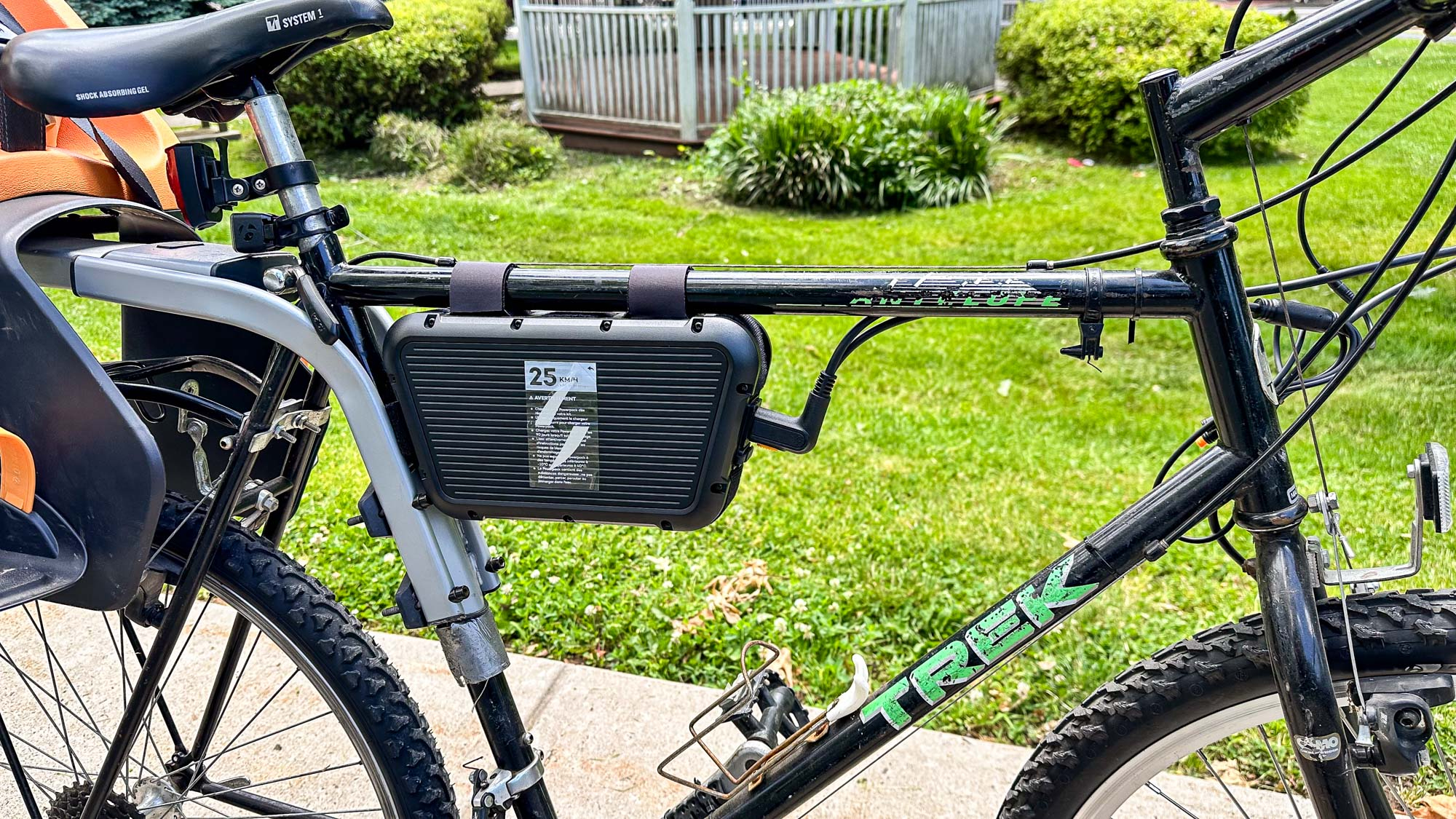
The Swytch Go uses the same 250W motor as the Swytch Air, which isn’t the world’s most powerful, but was more than enough to give me a nice assist as I rode my bike up and down the hills of my town — of which there are many. While there was some pedaling involved, the motor made it a lot easier to ride up inclines, especially when I was toting my daughter on the back of the bike.
Unlike electric bikes with torque sensors, it takes a crank or two before the Swytch’s motor kicks in, but it isn’t too much of a lag.
The small OLED display (which shows your speed, trip distance, and battery life) was bright enough for most situations. Two buttons just below the display let me adjust the level of motor-assist; they were easy to press, but you should try and mount it as close as you can to your thumb.
Swytch Go review: Battery life and range
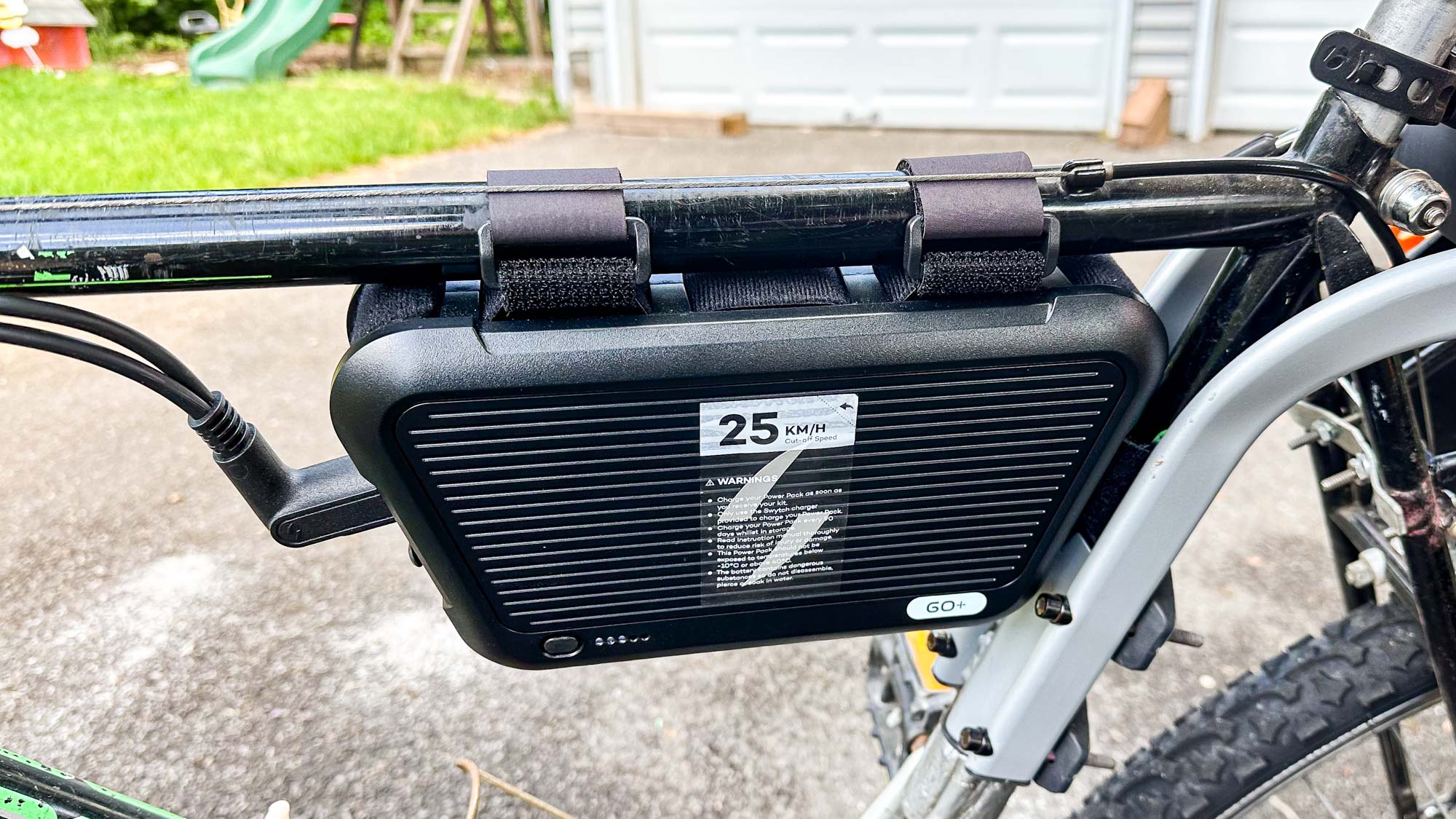
As mentioned earlier, I would recommend picking the Swytch Go+ battery, which has a capacity of 281Wh, and an estimated range of 30 to 40 miles. The starting Swytch Go has a capacity of 187Wh, which isn’t all that much more than the Swytch Air (180 Wh).
With the power assist set to its max level, I rode the bike for about 10 miles, and saw the battery drain about 40%; extrapolating that out would get me a range of around 25 miles, which is a little less than Swytch’s estimates, but still much better than the Air’s 14-mile range.
Unlike the Swytch Air’s battery, which pops out of its holder, the Swytch Go’s battery is meant to stay in place, even if it is held by a set of Velcro straps. Fortunately, it’s easy to recharge: Just connect the charger to the port in the front of the battery.
Swytch Go review: Verdict
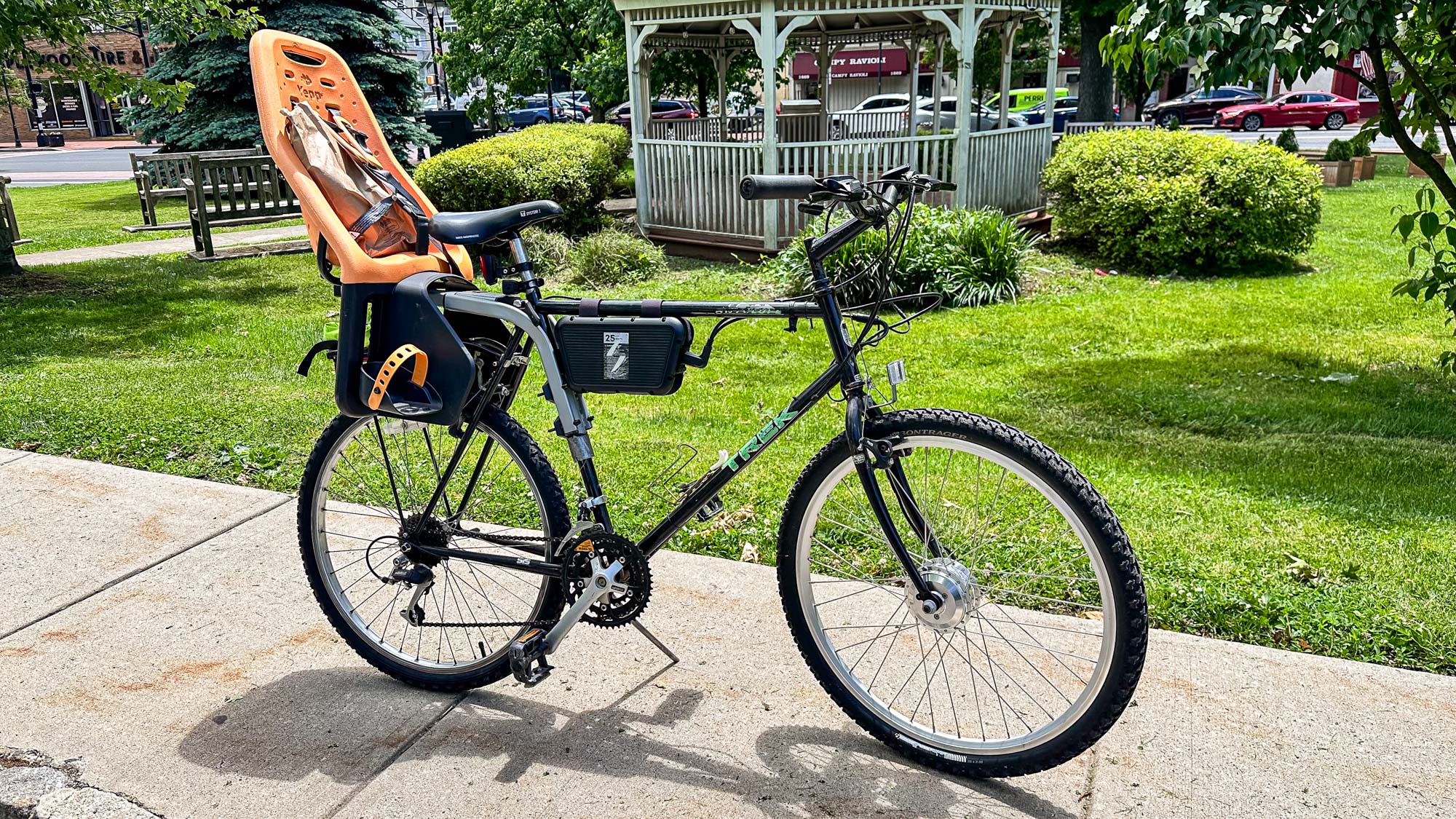
When I reviewed the Swytch Air, my two issues were its convoluted ordering process and the limited range of its battery. With the Swytch Go, the company has taken care of at least one of the problems — range anxiety — which now makes it a much more useful product.
As an added benefit, the fact that the Swytch Go’s battery is between the frame, rather than between the handlebars, means that you have a lot more room to mount a headlight or other accessory to the front of your bike.
If you want to order the Swytch Go — and can stand waiting until September — then you can get it with the Go+ battery and display for $429, or $579 if you want it by July. That’s a pretty reasonable price for a conversion kit, considering the best budget electric bikes start at around $1,000. If you have an old bike gathering dust — and don’t want to drop a grand or more on a new electric bike — the Swytch Go is definitely worth the investment and your time.







